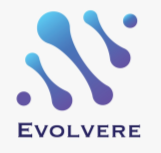When looking at your employees, how many of their skills do you think you’re aware of? The truth is, you are actually missing out on a majority of them! This happens because many are often judged based on their current position. But these people are capable of much more.
Therefore, to work on this drawback, Human Resource Managers use a coherent technique to utilise the company’s assets for a higher yield. Also known as Succession Planning, Competency Planning is an action plan designed to identify high-potential employees through evaluation and to develop their skills. It’s preparation for advancement to accelerate immediate performance and foster readiness for long-term career goals.
This kind of planning is gaining to be a priority of every employer as a part of strategic business planning. Under Competency Mapping, both the employer and the employee benefit because of the transparent blueprint. Clarified job expectations, performance evaluation and advanced paths can create a more positive work environment and a stronger relationship between the two. Moreover, a competency-based system also includes organisational training and developmental activities that enable the employees to efficiently achieve a high level of competency. On the other hand, this framework increases internal employee mobility, providing the organisation with an extraordinary ability to scale and flex as per the needs. The following is what is required for an efficient framework:
Choice of competency product
It is easy to throw out a list of behaviours necessary to an organisation. But, it would help if you considered whether all of them are strictly focused and cover the objectives relevant to your company’s success. There are many off-the-shelf competency dictionaries. But your definition of the success criteria for the project will measure the framework’s effectiveness once it is implemented.
Defined Structure
The accuracy of the framework will help you get precisely what you want. Is the mapping specific to an organisational hierarchy? Will the structure show positive examples of competencies? A detailed list of requirements and objectives will define all roles and functions within the organisation. You can also categorise on grounds such as essentiality, effectiveness and quality of performance.
Building a team
A project team will help you develop the framework through in-house resources. The success of the competency will highly depend on sourcing candidates and onboarding skills and expertise, which may have to be outsourced or hired. Having stakeholders included in your team can effectively endorse and champion the final framework. Hence, try to include these agents in your competency project panning.
Assembling the Framework draft
Undertaking detailed behavioural or critical incident interviews is one of the best techniques to be used. You can collect the required data from a selective number of employees within the framework’s scope across all the functions and levels. The examples collected should be categorised into various competency clusters for a further subdivision according to desired framework structure. Additionally, workshops with the project team will help the team process and hone the competency behaviour strongly.
Test your framework
Before you roll out the framework to the entire organisation, test your framework in various ways. You can select several employees belonging to different levels of performance and assessment. Irrespective of their current competencies, each of them must display a certain amount of improvement in their competencies. If you do not get this result, then you must reconsider your framework.
Implementation
Ensure the implementation of the fully developed and tested competency framework effectively. The agents and receivers of this framework should be fully trained and briefed about the procedure. Before moving on to your implementation methods, build a process for reviewing and updating the accomplishment of the framework regularly.
In the absence of government involvement, many organisations characterise themselves as autonomously running organisations. Thus, efficient and effective identification, utilisation, and implementation of competencies can become difficult for a global organisation. However, a team of scaled and efficient composition can amend organisational change and behaviour of people. Competence planning is a method that not only anchors the functionality but also renders behaviour changes in person, which perpetuates in the organisation’s core competencies in future.
